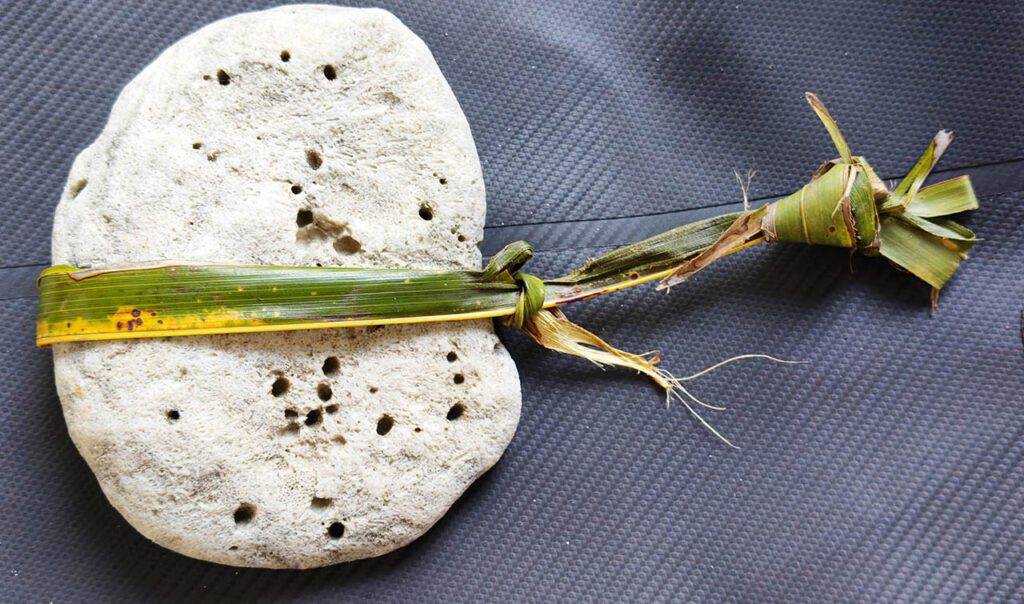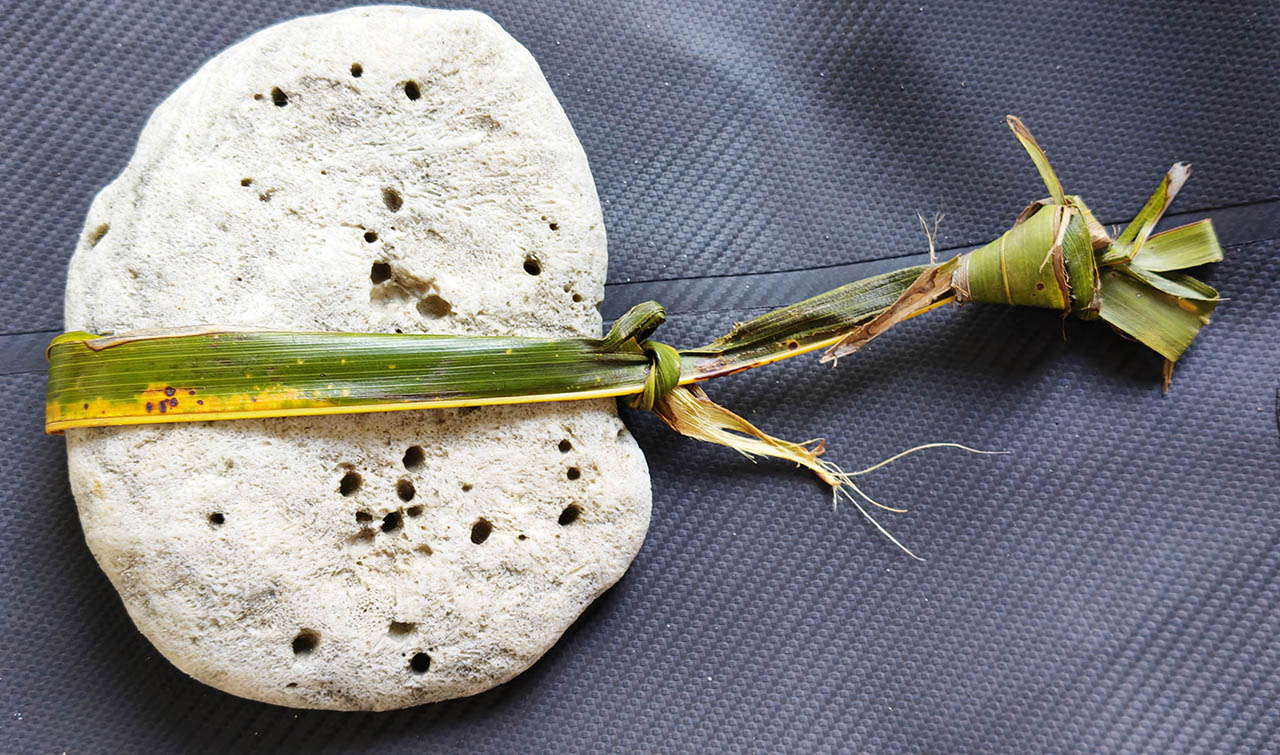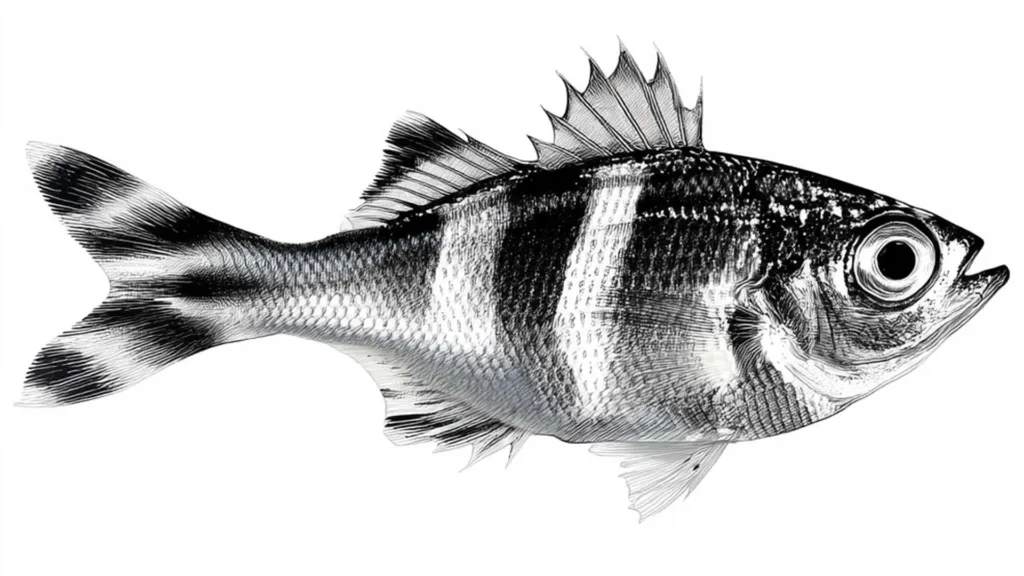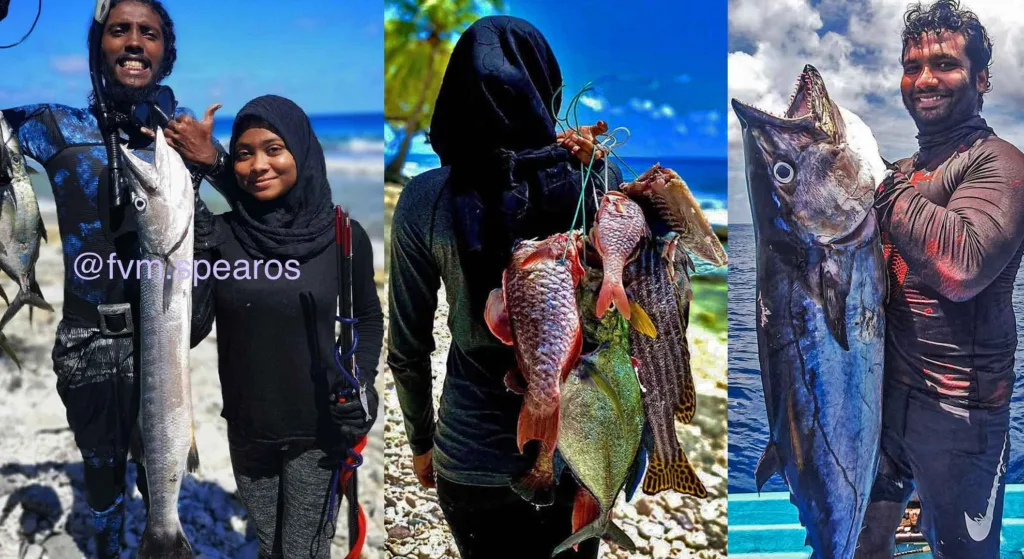
During the early days, fishermen on our island, Fuvahmulah, used coral stone pieces to sink bait to the bottom. This method is called adiebolaha dhemun. It was generally used for reef fishing and slightly deep fishing of around 50 to 250 m depth. There are two ways they carried out this method.
In the first method, vaana, thin bark strands extracted from sea hibiscus, are attached to a stone. Then the rigged bait is attached to a small knot at the end of a thin bark strand. Leaves of the coconut palm tree are also used to wind the stones and attach the hook to the sinker or stones.
The sinker is then dropped. When it reached the desired depth, the person holding the fishing line exerts a sudden quick thrust. At the moment the stone and the bait get separated, the fisherman pulls the fishing line with short rhythmic movement, letting it down. This pitch (this circle)—pulling up and sending the bait down—is the main enticing action of this style of fishing. They present this action by slowly pulling up the line and giving it a slack or by pulling it up in short, quick action and then letting it fall. Fish are attracted to the movement of this action and they strike the bait.

The other style is they use two flat stones of around 6 to 8 inches. The bait (bait fish cut into pieces) was placed in between these two stones. Vaanaa is wound around the stones. The hook is placed between the stones. After the stones are dropped, they pull the line up in a short, quick thrust—the two stones get separated. They call it ‘faanafedun’, the moment two stones detached and the bait stayed freely in the water column. Then they exert the same enticing action of pulling up and letting the bait fall.




